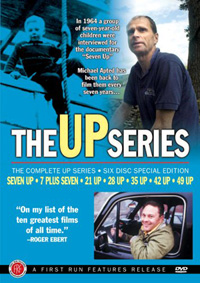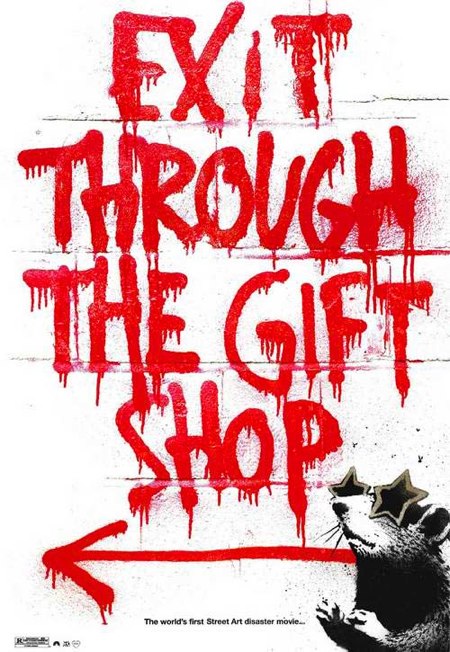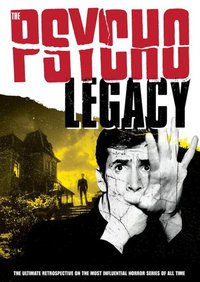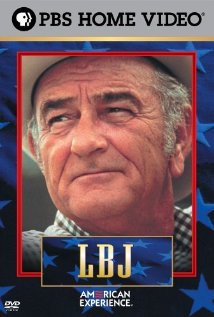The Up Series
 Imagine what it would be like to have a visual journal of your life from childhood to middle-age. Would you find the footage painful or nostalgic? Now imagine that this footage is aired on a yearly program in your nation and later available for purchase across the world. Many of us cannot begin to fathom what that would be like, even with the rise in reality television, but for a small group of Brits, it's been a reality for decades.
Imagine what it would be like to have a visual journal of your life from childhood to middle-age. Would you find the footage painful or nostalgic? Now imagine that this footage is aired on a yearly program in your nation and later available for purchase across the world. Many of us cannot begin to fathom what that would be like, even with the rise in reality television, but for a small group of Brits, it's been a reality for decades.
In 1964, directors Paul Almond and Michael Apted started a program for BBC called Seven Up!. The project was part of the World in Action series. Apted, along with Gordan McDougall, chose 14 children from different socioeconomic backgrounds, many offering extremes within the range. The motto of the project is “give me the child until he is seven, and I will give you the man,” based on a quotation from Ignatius Loyola. Given the harshness of the U.K. class system, those involved predicted that the children featured would more or less follow paths that could be expected of them, based on their background. The children range from illegitimate orphans to the extremely pampered, and in order to expose them to children from different class groups, they threw them together in a field trip and studied their behavior through contrast. Following this trip were in-depth interviews with each child and their close peers. This longitudinal study is then repeated every 7 years. The programs are as follows: Seven Up!, 7 Plus Seven, 21 Up, 28 Up, 35 Up, 42 Up, 49 Up, and a rumored 56 Up is to be aired in 2012.
Exit Through the Gift Shop
 Most of the talk surrounding Exit Through the Gift Shop was regarding whether it was a hoax or all real. But what was lost in the hoopla was what an incredibly entertaining and utterly fascinating film this documentary-within-a-
Most of the talk surrounding Exit Through the Gift Shop was regarding whether it was a hoax or all real. But what was lost in the hoopla was what an incredibly entertaining and utterly fascinating film this documentary-within-a-
Part conman, part art enthusiast, Guetta is like a bloated Pepe Le Pew. He has a bunch of kids and owns a Melrose vintage clothing store, and he constantly has a camera filming every aspect of his life. While visiting France he begins filming his cousin, a famous graffiti artist known as Invader. So begins an obsession for Guetta. Back in Hollywood he hooks up with another famous artist, Shepard Fairey (who later would become famous for his Obama “Hope” posters) and then meets loads more. He goes with them and takes part in their illegal night painting activities. When the legendary Bansky (whose real identity has never been revealed) comes to town, Guetta becomes his wingman and films all of his illegal art installations. Guetta then travels with him to London and back to LA where he serves as lookout for a stunt Banksy pulls in Disneyland. Eventually Bansky gives him the assignment to finally take all that footage and edit it into a film about street art. But what he puts together, a hodgepodge of images he calls Life Remote Control, it’s a total unwatchable mess.
The Psycho Legacy
 With so many books and documentaries made over the decades covering every aspect of Alfred Hitchcock’s amazing career and more specifically his masterpiece Psycho, what more can possibly be said about the subject? Director Robert V. Galluzzo manages to find a new and surprisingly fresh angle— instead of mulling over the influences on Hitchcock, we are reminded of the massive influence Psycho had. With an interesting group of talking heads, all obvious enthusiasts, they first contemplate the mythology that Psycho brought to cinema, but quickly they get to what makes the documentary most unique which is the study of the Psycho film sequels that sprung up some years later. Though not as commercially successful as many current horror film series, Galluzzo’s posse does manage to convince that they are worth a look.
With so many books and documentaries made over the decades covering every aspect of Alfred Hitchcock’s amazing career and more specifically his masterpiece Psycho, what more can possibly be said about the subject? Director Robert V. Galluzzo manages to find a new and surprisingly fresh angle— instead of mulling over the influences on Hitchcock, we are reminded of the massive influence Psycho had. With an interesting group of talking heads, all obvious enthusiasts, they first contemplate the mythology that Psycho brought to cinema, but quickly they get to what makes the documentary most unique which is the study of the Psycho film sequels that sprung up some years later. Though not as commercially successful as many current horror film series, Galluzzo’s posse does manage to convince that they are worth a look.
Though the documentary only uses quick muted clips from the films, the stills and the talking heads are engaging enough that you may not even notice. It mentions early on, briefly, that William Castle spent a decade trying to rip-off Psycho (Straight-Jacket, Homicidal, etc.), but the dozens of French thrillers and Italian horror flicks that were directly influenced by Hitchcock are ignored. Hell, if you want to talk about Psycho’s legacy (and Hitchcock’s) Brian De Palma’s had a whole career doing bad Hitchcock (until later when he discovered other genres to steal from). The Psycho Legacy also avoids Gus Van Sant’s pointless scene-for-scene remake and the short-lived Bud Court TV Series The Bates Motel. No, the Psycho legacy these guys are itching to rap about are the three “sequels.”
LBJ (The American Experience)
 Whether it’s the Kennedys, Nixon, or FDR you can’t go wrong with any of the thoroughly epic political biographies produced by PBS for their American Experience television series. To understand the turbulent sixties no documentary gives a better overview than the exhausting, yet exuberant, Lyndon Johnson bio called, simply enough, LBJ. Johnson’s life was full of both contradictions and surprises; in the end he both represents and played a major hand in both the best and worst legacies of the decade.
Whether it’s the Kennedys, Nixon, or FDR you can’t go wrong with any of the thoroughly epic political biographies produced by PBS for their American Experience television series. To understand the turbulent sixties no documentary gives a better overview than the exhausting, yet exuberant, Lyndon Johnson bio called, simply enough, LBJ. Johnson’s life was full of both contradictions and surprises; in the end he both represents and played a major hand in both the best and worst legacies of the decade.
The film unfolds in four hour-long chapters. Episodes one and two cover a lot of ground: LBJ’s early years as the son of a Texas politician, his marriage to Ladybird, and his wins and losses in the rough world of Texas politics. He became a grand deal-making charmer first in the House of Representatives and then in the Senate. His humbling run as JFK’s vice president ended after those gunshots rang out in Dallas simultaneously throwing history a curve ball and making Johnson the president. Finishing Kennedy’s term he out-Kennedyed the Kennedys by passing loads of important legislation and was overwhelmingly reelected by the American people. And that’s when the second half kicks in, covering those disastrous last four years and beyond as his amazing social triumphs were overshadowed by the escalating war in Vietnam—a war which he inherited but naively continued to send the country deeper into.
RFK Must Die: The Assassination of Bobby Kennedy

As a hardcore JFK assassination buff (what red-blooded American kid didn’t go through that phase and read Mark Lane’s amazing book Rush To Judgment?), I have to admit, I generally thought that it was kind of a given that Sirhan Sirhan was the lone gunman in brother Bobby’s murder. There have been some swirling conspiracy theories in the back of my head but I never acknowledged them, thinking the assassination of RFK was pretty much an open and shut case. But Shane O’Sullivan's documentary on everything you could ever want to know about the case is very persuasive in making its claim that there is more than meets the eye. Like the JFK case, what makes it more suspicious is the effort that was put forth by law enforcement (LAPD and the FBI) to convince witnesses that they didn’t actually see or experience what they think they saw and experienced. RFK Must Die: The Assassination of Bobby Kennedy may be the quintessential document on the case with some stunning information and footage that I had no idea was available to the public.
Director O’Sullivan proves to be a smart unbiased filmmaker; he lets some of his dramatic conclusions contradict themselves when they don’t fully add up as neatly as a Hollywood story. He’s not fully sure where the information will take him so therefore he does not appear to be driving the story in one direction. The material just so happens to lead to the conclusion that something odd happened that night at the Ambassador Hotel.
Continue ReadingThe Kid Stays In The Picture

The autobiography The Kid Stays In The Picture by one time hot-shot studio head and producer Robert Evans may be the only book to have gained a cult following with its audio recording. Evans reads from his own pages, and his cool persona as a guy with a lot of regret and a lot of amazing memories are quite entertaining. The film version uses those audio recordings for narration and a lot of archive footage, film clips, and most creatively still pictures with a 3-D effect to tell this rather astounding story of Evans' miraculous Hollywood rise and then devastating fall.
At first Evans was in the clothing business in New York with his brother. And then one lucky break after another happened for the tanned haberdasher. Famously, on a business trip to Los Angeles he was “discovered” by Norma Shearer while lounging by the pool at the Beverly Hills Hotel. He was thrust into a minor acting career playing Irving Thalberg in the Lon Chaney bio A Man Of A Thousand Faces and then Pedro the bullfighter in The Sun Also Rises. That was the peak as an actor but he soon became an independent producer developing The Detective with Frank Sinatra. With Gulf & Western taking over Paramount Pictures out of seemingly nowhere Evans was made the Head of Production.
Continue ReadingPrimitive London

Sleeker and more satisfying than any fictional era-reproduction in cinema, Primitive London, the follow up to London in the Raw, gives viewers the pleasure of revisiting London's diverse '60s pop culture. Touching on the divide of its affluent and poverty-stricken society following the depression, the film begins by zooming in on London's adolescents.
Starting with mod culture, the film describes those involved in it as having an identity with no class boundaries. Regardless of where you came from, the flashy and colorful clothing of this scene could transform you into a character worthy of fickle respect. There's also an explanation for the effeminate male clothing, which apparently derived from the abundance of womens textiles when many would-be male patrons were killed in two world wars. Outfits that would have been seen as amoral for a man became acceptable.
Continue ReadingRoger & Me

Forgetting Michael Moore’s politics, his sometimes annoying personality, and his questionable fact-checking skills, the guy has done more than any other director to bring the art form of documentary filmmaking into the mainstream. His first film, Roger & Me, is still probably his best film. It caused a major stir in the world of documentaries, established the format he has continued to use for decades, and has since been ripped-off and copied by numerous other documentary makers. No documentary before Roger & Me instantly gave its maker such a strong brand name.
Before the breakthrough of Roger & Me in 1989, the documentary field was mostly dominated by concert films, nature, travelogue, and straight political docs, or film theory class usual-suspects like the works of Frederick Wiseman (Titicut Follies). Though there were a number of important documentarians on the scene with vital careers like Albert and David Maysles (Grey Gardens), Barbara Kopple (Harlan County, USA), D.A. Pennebaker (Don’t Look Back), Rob Epstein (The Times Of Harvey Milk), and even Michael Apted with his ongoing Up Series for British television. Then in the mid '80s Errol Morris really broke through with his minimalist true-crime saga, The Thin Blue Line, as did Ross McElwee with his very personal history lesson, Sherman’s March. They all led the way for Michael Moore to infuse blue-collar liberal politics with his personal and humorous slant.
Continue ReadingFemale Misbehavior

The title of this documentary makes me angry. Of course you know why; here are these “bad girls” who swear and are neurotic loud-mouths who shouldn't display themselves so gracelessly. The director of these four documentaries should have known better, seeing as how she directed smut, but forgiveness can be given based on her choice of subjects. Director Monika Treut dips into the lives of four women who couldn't be more different than the average woman, and yet offer some amazing lessons in life. Camille Paglia, true-feminist and all-time eccentric, opens the documentary by revealing the fickle and dishonest reality of American feminism and gives her two cents on what is right and wrong with our view of women and their bodies. Camille's segment is followed by a short documentary on Annie Sprinkle, a notorious '80s porn star who worked with the likes of Jennifer Welles and now has a doctorate in human sexuality. Following Annie is a short on bondage, and one woman in particular whose life was forever changed by its introduction into her life. This particular short is a bit more on the experimental side, with less interview time and more artsy shots of skin against leather, etc. Following that is a documentary on Max, who's going through the expense and social hostility of a female to male sex change.
The first segment on Camille really blew my mind. As a woman who considered herself a feminist, I always found the idea of feminist theory as a whole to be very restrictive and a little contradictory. Camille is a fast-talking woman who always had issues with her sexuality. She flips from bisexual to asexual on a daily basis and could never understand why it was so difficult to find someone compatible. Her biggest issues come with women in the lesbian community who, for the most part, frown upon the idea of a partner who is still interested in men. I'm not sure if this reality is one that threatens their comfort or appears to be a false claim, but it's not unheard of for people in the gay community to disassociate themselves from those who leave the issue open. Camille also offers a more radical stance on feminism because she is pro-pornography and doesn't see it as something degrading for a woman, or a man. Many of her beliefs are compared to Freud and early masochistic arguments. This, along with her many other rants, have led many feminists to see her as the anti-feminist, or more amusing, the “Stalin of feminism.” Despite all of the negative criticism toward her, she's taught at and attended several prestigious universities and her book, Sexual Personae: Art and Decadence from Nefertiti to Emily Dickinson, broke publishing records for scholastic literature. While I didn't agree with her entirely, I enjoyed her fervor and engaging arguments. If you're a woman who could never understand why productions like The Vagina Monologues had such huge success, you'll enjoy listening to Camille's interviews.
Continue ReadingAmargosa

In the 1970s, journalists for the National Geographic magazine stumbled into a small, seemingly deserted theater in Death Valley. Inside was a woman of old age dressed in costume, performing ballet for an empty room. Surrounding the stage and empty seats was her artwork, a mural done over the course of a few seasons that resembles an audience of nobles and royalty. These journalists found the woman, Marta Becket, to be extraordinary. They interviewed her, trying to understand how an aged New York ballerina found her way to the desert, and what she hopes to accomplish. They discovered that she was reclusive, a woman used to being alone and yet only wanted love and understanding from human beings. When this simple desire conflicted with her quest to become a devoted artist, she turned to the desert and one of its ghost towns for solace. Amargosa attempts to chronicle her life, both in the limelight and in Death Valley.
Marta Becket started dancing at 14, which she states was a late start. Her mother nourished and supported her efforts to sing, dance, and paint, while her father remained a skeptic until his death. She made it to Broadway, dancing for years and developing beautiful relationships with dancing partners and associates. She married in her 30s and thought she had finally settled into life, until something seemed to tug at her conscience. She saw a fortune teller, but couldn't figure out what the prophecy meant. After riding through the desert with her husband, they got a flat tire and began looking for help. Nearby was a small white theater, deserted and literally falling apart. Upon discovering the theater, Becket presented her find to her husband and inquired about its ownership. The town was mostly uninhabited and in desperate need of repairs, so Becket was offered the theater for practically nothing in exchange for fixing it up. The decision to move to the desert and start a new life was done with a haste and assuredness that wasn't matched by her husband. They two split after years of an already difficult marriage, and Becket settled into the idea of truly being alone. She renamed the theater Amargosa, which is Spanish for “bitter” and was the former name of Death Valley Junction, where the theater stands.
Continue Reading




